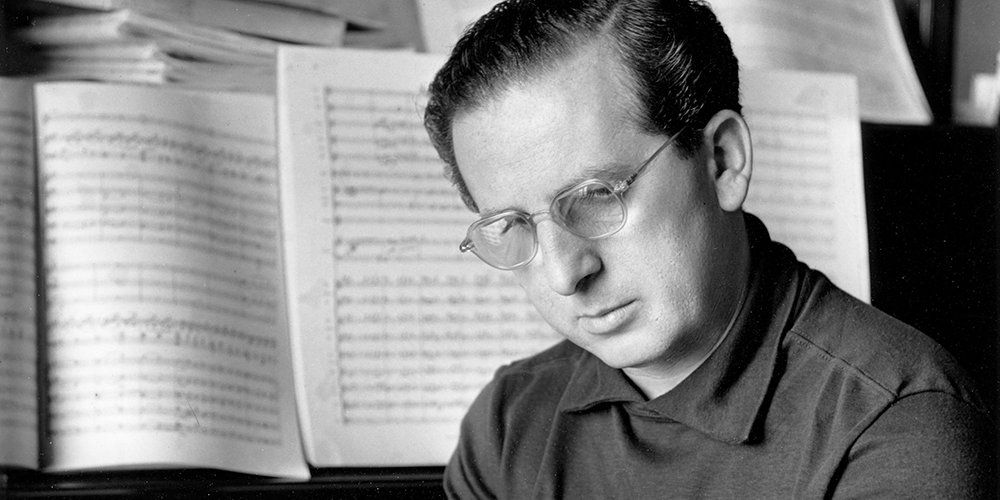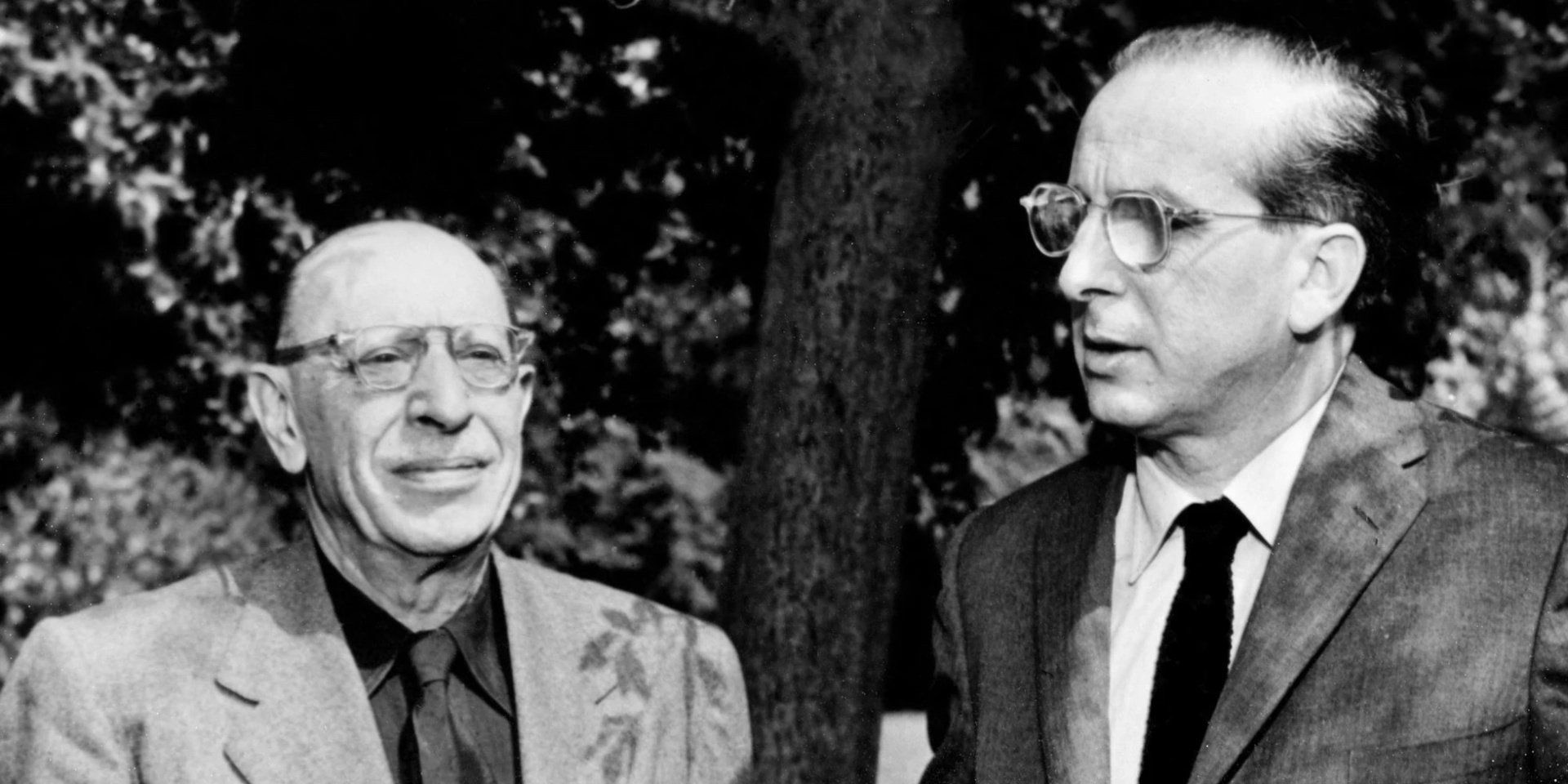Franz Waxman

Franz Waxman a mené une vie musicale variée en tant que compositeur, chef d'orchestre et impresario. Il est né le 24 décembre 1906 à Königshütte, en Haute-Silésie, en Allemagne, étant le plus jeune de six enfants. Personne dans la famille n'était musicien, sauf Franz, qui a commencé à prendre des leçons de piano à l'âge de sept ans. Son père était un industriel et, ne croyant pas que son fils puisse gagner sa vie dans la musique, l'a encouragé à faire carrière dans la finance. Il travaille pendant deux ans et demi comme caissier et utilise son salaire pour payer des leçons de piano, d'harmonie et de composition. Il quitte ensuite la banque et part à Dresde puis à Berlin pour étudier la musique.
Pendant cette période, il paie son éducation musicale en jouant du piano dans des boîtes de nuit et avec les Weintraub Syncopaters, un groupe de jazz populaire de la fin des années 1920. Au sein de ce groupe, il commence à faire leurs arrangements, ce qui l'amène à orchestrer certains des premiers films musicaux allemands. Frederick Hollander, qui avait écrit de la musique pour les Weintraub, confie à Waxman sa première tâche importante au cinéma : orchestrer et diriger la partition de Hollander pour le film de Josef von Sternberg, DER BLAUE ENGEL (L'ange bleu). Le producteur du film, Erich Pommer, qui dirigeait également les studios UFA à Berlin, était si satisfait de l'orchestration de la partition qu'il a confié à Waxman sa première grande expérience de compositeur : La version de Fritz Lang de LILIOM (1933), filmée à Paris après leur exode d'Allemagne. La commande suivante de Pommer, MUSIC IN THE AIR de Jerome Kern (Fox Films, 1934), l'emmène aux États-Unis, et Waxman l'accompagne pour arranger la musique.
La première partition originale de Waxman à Hollywood est celle du film THE BRIDE OF FRANKENSTEIN (1935) de James Whale, ce qui lui vaut un contrat de deux ans avec Universal en tant que directeur du département musical. Il a signé la musique d'une douzaine des plus de 50 films Universal sur lesquels il a travaillé en tant que directeur musical. Parmi les plus connus, citons MAGNIFICENT OBSESSION, DIAMOND JIM et THE INVISIBLE RAY.
Deux ans après son arrivée à Hollywood, Waxman, alors âgé de 30 ans, signe un contrat de sept ans avec la Metro-Goldwyn-Mayer. Il travaille en moyenne sur sept films par an, et c'est au cours de cette période qu'il compose la musique de films de Spencer Tracy aussi célèbres que CAPTAINS COURAGEOUS, DR. JEKYLL AND MR. HYDE et WOMAN OF THE YEAR. En 1937, il est prêté par la M-G-M à David O. Selznick pour THE YOUNG AT HEART et est nommé à la fois pour la meilleure musique originale et la meilleure partition - les deux premières des 12 nominations aux Oscars qu'il recevra pour les 144 films dont il a signé la musique pendant ses 32 ans à Hollywood. En 1940, il est à nouveau prêté à Selznick, cette fois pour REBECCA, et est nommé pour son troisième Oscar.
Waxman quitte la M-G-M en 1943 et commence une longue association avec la Warner Brothers. OLD ACQUAINTANCE date de cette période. (Des extraits de trois autres de ses partitions pour Warner Brothers peuvent être écoutés sur des albums RCA : MR. SKEFFINGTON est inclus dans The Classic Film Scores for Bette Davis, TO HAVE AND HAVE NOT et THE TWO MRS. CARROLLS sont inclus dans Casablanca: The Classic Film Scores for Humphrey Bogart et OBJECTIVE, BURMA ! sur Captain Blood: The Classic Film Scores for Errol Flynn).
En 1947, Waxman fonde le Festival international de musique de Los Angeles, qu'il dirigera pendant 20 ans. Les premières mondiales et américaines de 80 œuvres majeures de compositeurs tels que Stravinsky, Walton, Vaughan Williams, Chostakovitch et Schoenberg ont été créées lors de ce festival.
En 1947, Waxman a un emploi du temps très chargé. Outre le fait qu'il consacre beaucoup de temps au festival, il est sollicité par tous les grands studios, est invité à diriger des orchestres symphoniques en Europe et aux États-Unis et compose de la musique de concert. Pour le film HUMORESQUE, il a écrit une pièce spéciale basée sur des thèmes de Carmen de Bizet, qui a été jouée par Isaac Stern sur la bande sonore. La Carmen Fantasie est devenue un répertoire standard et a été enregistrée par Jascha Heifetz pour RCA. Parmi les autres œuvres de concert de Waxman, citons l’Ouverture pour trompette et orchestre, basée sur des thèmes de THE HORN BLOWS AT MIDNIGHT, la Sinfonietta pour orchestre à cordes et timbales, un cycle de chansons dramatiques The Song of Terezin et un oratorio, Joshua.
Waxman a remporté l'Oscar en 1950 pour SUNSET BOULEVARD de Billy Wilder et en 1951 pour A PLACE IN THE SUN de George Stevens. Pendant plus d'un demi-siècle, il a été le seul compositeur à avoir remporté le prix de la meilleure musique de film deux années de suite. C'est dans les années 50 et 60 qu'il a composé certaines de ses partitions les plus importantes et les plus variées. Celles-ci sont représentées par les deux lauréats des Oscars mentionnés ci-dessus, ainsi que par PRINCE VALIANT et TARAS BULBA. Alors qu'il était généralement associé à des films romantiques, il a évolué vers des partitions épiques et orientées vers le jazz. CRIME IN THE STREETS, THE SPIRIT OF ST. LOUIS, SAYONARA, PEYTON PLACE et THE NUN'S STORY sont également de cette période et les partitions complètes ont été publiées sur des albums de bandes originales. Franz Waxman a reçu de nombreuses distinctions au cours de sa vie, notamment la Croix du mérite de la République fédérale d'Allemagne de l'Ouest, le titre de membre honoraire de la Mahler Society et de la Société internationale des arts et des lettres, ainsi qu'un doctorat honorifique en lettres et sciences humaines du Columbia College. Il est décédé le 24 février 1967, à Los Angeles, à l'âge de 60 ans.
Avec Erich Wolfgang Korngold, Max Steiner, Dimitri Tiomkin, Bernard Herrmann et Alfred Newman, un timbre-poste des États-Unis a été émis en 1999. Lors du récent centenaire de Waxman, une rue de sa ville natale a été baptisée Franz Waxman Straße. L'Academy of Motion Picture Arts & Sciences et Turner Classic Movies ont organisé des hommages. Le Museum of Modern Art de New York a présenté une rétrospective de 24 films ; c'était la première fois que le MoMA honorait un compositeur. L'orchestre symphonique de Chicago a récemment interprété la partition complète de THE BRIDE OF FRANKENSTEIN en direct sur le film.

Festival de musique de Los Angeles
En mai 1947, Franx Waxman a organisé, dirigé et financé une série de concerts sous le nom de Beverly Hills Music Festival. En 1949, cette entreprise est rebaptisée Los Angeles Music Festival et les concerts de cette année-là sont annoncés comme la « troisième saison annuelle ». Officiellement, les programmes du festival sont parrainés par la Los Angeles Orchestral Society, que Waxman a créée spécialement pour parrainer les concerts. Tout au long des vingt années d'existence du festival, les musiciens étaient principalement issus de la communauté professionnelle locale.
Le Festival, situé entre la saison automne-printemps de l'Orchestre philharmonique et les programmes d'été du Hollywood Bowl, a montré dès le départ l'empreinte des intérêts et des objectifs esthétiques de Waxman. Waxman a été l'un des pionniers du programme « mixte » qui jette un nouvel éclairage sur des chefs-d'œuvre familiers en les plaçant dans le contexte de compositions contemporaines. Dans sa critique du concert du 2 juin 1954, la critique du Los Angeles Daily News, Mildred Norton, écrit que la nouvelle saison « perpétue la tradition établie par le fondateur et directeur du festival, Franx Waxman, qui consiste à proposer des programmes originaux et stimulants. » Bien qu'il ait fait partie de l'industrie cinématographique, qui est souvent (et à tort) associée à des attitudes musicales conservatrices, Waxman était un ardent défenseur de la musique contemporaine, comme le montrent clairement les programmes des concerts. Même Mozart est surclassé par Stravinsky, résident de Los Angeles. Arthur Honegger, pour qui Waxman ressentait une affinité particulière, est bien représenté, et parmi les événements les plus marquants de l'histoire du festival figurent la première mondiale d’Agon de Stravinsky en 1957 et la première sur la côte ouest du War Requiem de Britten, sous la direction de Waxman, qui a eu lieu moins de deux ans après la publication de l'œuvre en 1962.
À partir de la saison 1956, CBS Radio a sélectionné des concerts du festival pour les diffuser dans tous les États-Unis et à l'étranger dans le cadre de ses festivals de musique du monde. Le Los Angeles Music Festival a été inclus dans les programmes de Bergen (Norvège), Helsinki (Finlande) et Salzbourg (Autriche). Les critiques des concerts du Festival - comme celles des concerts donnés dans d'autres lieux - font régulièrement l'éloge des compétences de Waxman en tant que chef d'orchestre : clarté du geste, richesse de l'expression, preuve d'une préparation méticuleuse, communication avec les musiciens et conception de l'ensemble.
Dès la deuxième année, les concerts du festival se déroulent principalement sur le campus de l'UCLA et, progressivement, un lien étroit s'établit avec l'école de musique. Le festival de 1961 a été baptisé Premier festival international de musique de Los Angeles et, le 6 juin, le Schoenberg Hall de l'UCLA a accueilli une Conférence internationale des compositeurs avec un panel modéré par Roy Harris et comprenant Karl-Birger Blomdahl, Werner Egk, Lukas Foss, Blas Galindo, Iain Hamilton, Kara Karayev, Tikhon Khrennikov, Milhaud, Piston, Rozsa, Stravinsky, John Vincent, Elinor Remick Warren et Waxman lui-même. Deux jours plus tard, un Symposium international des critiques était animé par le doyen de l'école de musique de l'USC, Raymond Kendall.
Le festival de 1962, dont Waxman est le « fondateur et directeur musical », est également un « festival international » conçu comme l'année précédente : quatre concerts avec un Symposium on the Arts au milieu. En 1963, le nom officiel du festival est devenu Festival international de musique de Los Angeles, mais un an plus tard, le nom est redevenu Festival de musique de Los Angeles et le format a changé pour inclure deux concerts et deux récitals. La saison 1965 comprenait un cycle de tous les concertos pour piano de Beethoven interprétés par Rudolf Serkin, et la dernière saison (1966) revenait à un format utilisé deux fois auparavant : trois concerts orchestraux et un autre de compositions de jazz en concert. Il est à la fois touchant et approprié que la dernière composition interprétée dans le cadre de la série du Festival ait été le cycle de chansons pour orchestre de Waxman lui-même, The Song of Terezin.
DER MANN, DER SEINEN MÖRDER SUCHT (L'homme à la recherche de son meurtrier) est un film comique de l'UFA de 1931 dont le scénario est de Billy Wilder et la réalisation de Robert Siodmak. Waxman chante et joue du piano avec les Weintraub Syncopators.



